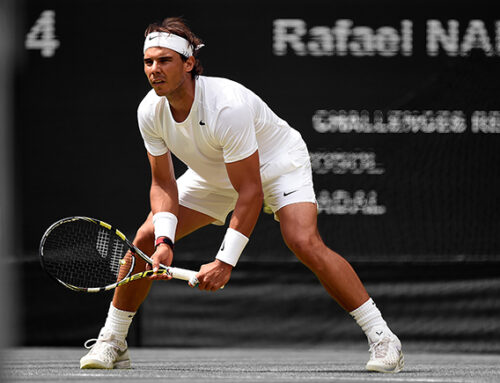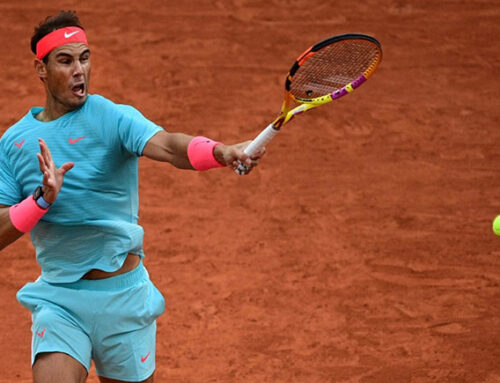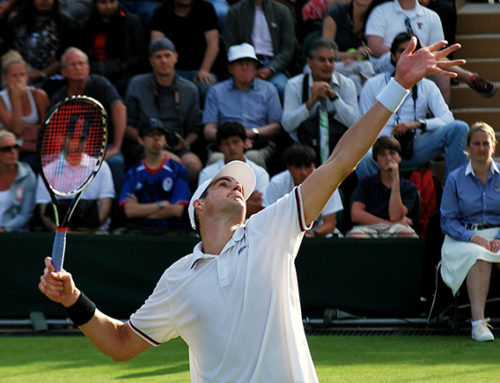Watching Gael Monfils fight his way through a 5th set with David Ferrer today brings up an interesting question: why hasn’t Gael Monfils enjoyed greater success at the professional level? Sure he is currently ranked #9 in the world, with $5 million in career prize money and three career titles. That’s nothing to sneeze at. But really if we take a closer look, his three titles were all on smaller stages (Montpelier, Metz and Sopot), and 10 other finals appearances where he suffered defeat. 3 from 13 is hardly a compelling record in finals. And let’s be honest – Monfils is probably the greatest pure athlete in the history of the men’s professional tour. 6’4, 180 lbs of lean muscle who is fast, flexible and agile. He makes defensive gets that are mind-blowing at times, and he is strong as an ox.
So why can’t Gael Monfils break through?
He is somewhat reminiscent to me of Fernando Verdasco. For years I watched Verdasco play, and wondered why he didn’t enjoy greater success. He was a good athlete, with beautiful technique on his serve and groundstrokes, and sufficiently good volleys. But he consistently made poor decisions on the court, and that limited his results. Then Verdasco went and did some genuinely hard work with Gil Reyes and got in amazing shape. The improved physical capacity increased his margin for error on the poor decisions he did make, but then he also started making some better choices as well. No longer feeling the need to end points prematurely, he was able to more often choose the shot that gave him the best chance to win the point.
Coming back to Monfils, one glance at his chiseled frame shows that physical preparedness is not the problem. He is strong, and fast, and fit. But he is incredibly guilty of poor decisions on two levels. The first is strategically. For a man with his speed and strength, he is remarkably committed to playing defensive tennis. He is entirely too happy to sit 10 feet behind the baseline and use his athleticism to play fetch. It isn’t he is incapable of transitioning from defense to offense – he simply chooses not to. This brings us back to an earlier post about Caroline Wozniacki – in doing so he surrenders control of the match to his opponents. Yes, a 6’4 physical beast of a player gives up control of the match. The second issue is one of style. Monfils plays to entertain. Too often in matches he will choose shots for their potential to please the crowd rather than their chances of winning the point.
To call them two separate issues is perhaps simplistic – in many ways his choice for a defensive style of play is tied into his desire to entertain. Former French great Henri Leconte was also driven by a need to entertain. A flashy player, his attacking flair was beautiful to watch. Monfils entertains with his defense. His defensive gets draw gasps of amazement and appreciation from the crowd. The drama of his points as he scurries from side to side (and slide to slide on the clay) are high entertainment.
For all that, at some point Monfils must make a decision as to how he is to be remembered. He can continue in his current vein, and be a consistent presence in the top 20. Or he can begin to play more aggressive tennis and become a genuine threat in the later stages of Grand Slams. He has the talent to win at least one Slam before he is done, and at only 24 with his physical gifts and the game he is capable of bringing to the court, he could be a multi-slam winner. One can’t help feeling that he already made his choice.


